If you’re looking to buy a Stratocaster then you have a big decision to make. Do you go with the more expensive Fender version? Or is the cheaper Squier model going to give you everything you need?
In this article I’ll be directly comparing and highlighting all the differences between Squier and Fender Stratocasters, so you can figure out which is the best option for your next guitar.
Fender Stratocasters are made in the USA, Mexico and Japan whereas Squier Stratocasters are made in Indonesia. Squier Stratocasters are at least $350 cheaper than Fender Stratocasters but use less expensive woods, finishes and pickups and do not come with a gig bag or additional controls/ switches.
| Fender Stratocaster | Squier Stratocaster |
| Made in the USA, Mexico and Japan | Made in Indonesia |
| Use alnico pickups | Use alnico or ceramic pickups |
| Body wood is typically alder or ash | Body wood is typically poplar or nyatoh |
| Fretboards are made from maple, pau ferro or rosewood | Fretboards are made from maple or Indian laurel |
| Have either a polyester, polyurethane or nitrocellulose finish | Have a polyester finish |
| Option of either C, D or V shape necks | All models have C-shape necks |
| Some models have a push/ pull tone or volume control | No push/ pull tone or volume control |
| Almost all models include a gig bag or case | No gig bag included |
| Price range is $800-$2600 | Price range is $200-$430 |
If you’re looking for a specific comparison between the most expensive Squier and cheapest Fender Stratocaster, check out my comparison between the Squier Classic Vibe and Player Series
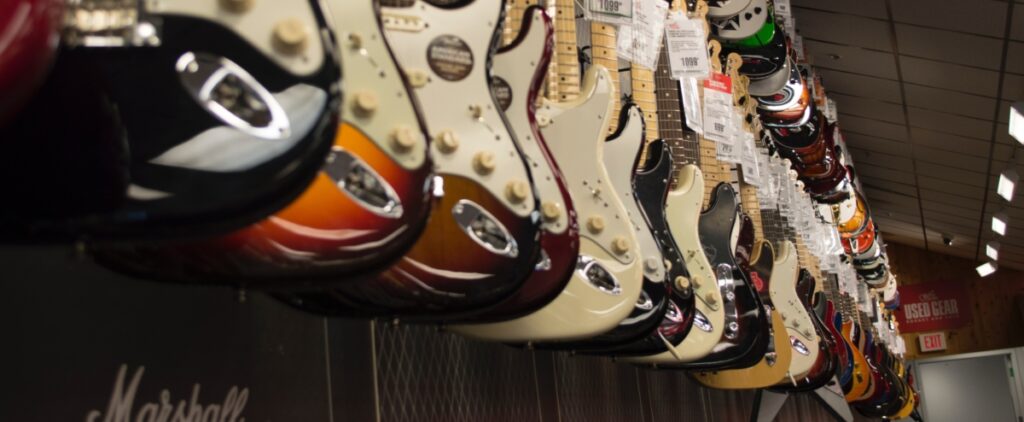
Where are they Made?
One of the biggest differences between Fender and Squier Stratocasters is where they are manufactured.
- Fender Stratocasters are made in the USA, Japan and Mexico
- Squier Stratocasters are made in Indonesia
Here is a list of all the different Stratocaster models available (at the time of writing) and where they are made:
Made in the USA:
- Fender American Ultra Luxe Stratocaster
- Fender American Vintage II Stratocaster
- Fender American Ultra Stratocaster
- Fender American Original Stratocaster
- Fender American Professional II Stratocaster
- Fender American Performer Stratocaster
Made in Mexico:
- Fender Player Stratocaster
- Fender Player Plus Stratocaster
- Fender Vintera Stratocaster
Made in Indonesia:
- Squier Mini Stratocaster
- Squier Bullet Stratocaster
- Squier Sonic Stratocaster
- Squier Affinity Stratocaster
- Squier Contemporary Stratocaster
- Squier Classic Vibe Stratocaster
Made in the Japan:
- Fender Aerodyne Special Stratocaster
- Fender MIJ Stratocaster
Fender Stratocasters typically have significantly better build quality compared to Squier alternatives. This is mostly due to the extra attention to detail and quality control that goes into the production process, in addition to the better materials.
USA-made Stratocasters have the best reputation, but Mexican and Japanese Stratocasters are also highly regarded as very well made instruments. Fender have factories in Mexico and the USA which exclusively make their brand guitars, meaning they have complete control over the production process.
Check out my comparison between Mexican and American Stratocasters to learn more.
The Squier Stratocaster models on the other hand are made in Indonesia in factories that are not owned by the brand and also make guitars for a range of other companies. Since these factories produce a higher quantity of guitars, the quality control is not as stringent, and as a result you can expect a lower build quality.
That doesn’t mean that Squier Stratocasters are poorly made though. The cheapest Squier Stratocasters (e.g. Bullet, Affinity and Mini) are good instruments for the price, but the more expensive Squier Classic Vibe Stratocasters I personally think are excellent quality regardless of the price. In fact, I’ve tried some Squier CV Stratocasters that I prefer compared to Fender Player models.
Check out my article on where Fender and Squier guitars are made for more info on where Squier and Fender Stratocasters are made, and if it actually matters.
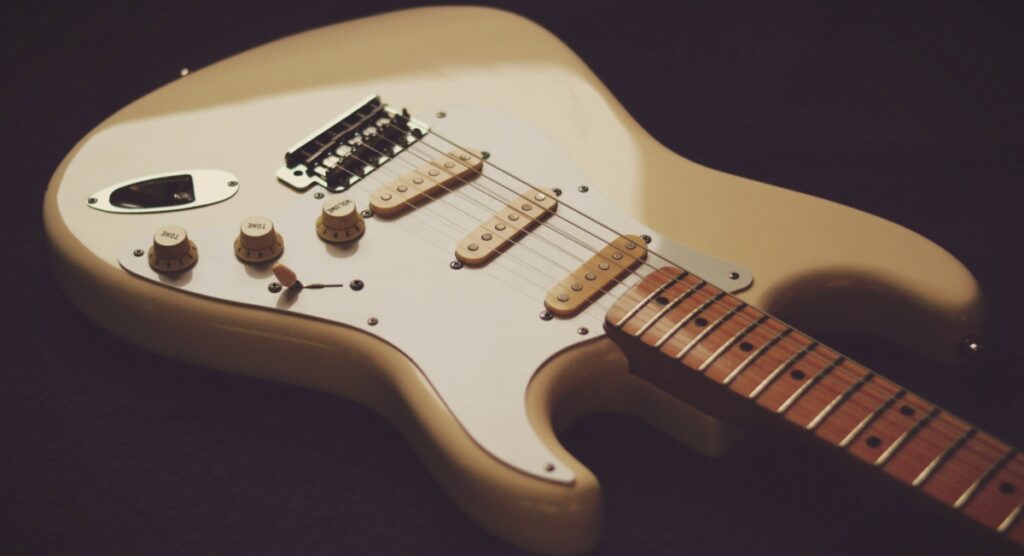
Pickups and Tone
The cheapest Squier Stratocasters (Bullet, Affinity and Sonic) use ceramic pickups which in my opinion do not sound like an iconic Strat compared to the alnico pickups which are used in the Squier Classic Vibe model.
There are loads of different pickups in the different Fender Strat models (e.g. American Professional, Player series etc.), which all sound slightly different to one another but have that iconic Strat character to them.
Here is a brilliant video by Darrell Braun Guitar comparing the tones of several different Fender and Squier Stratocaster models.
Body and Fretboard Wood
All standard Stratocaster (Squier and Fender) models have maple necks, however they use different woods to make the bodies and fretboards.
Body Wood
- Squier Stratocaster bodies are made from either poplar, maple, or nyatoh
- Fender Stratocaster bodies are made from either alder, ash, basswood or mahogany
Stratocasters are traditionally made with alder or ash, so Fender have gone with the option on pretty much all of their models. Most Squiers Stratocasters have a poplar body which doesn’t look as attractive (when left with a transparent finish) and doesn’t sound as lively and dynamic as an alder body found on most Fender Strats.
How much of a difference the body wood makes on an electric guitar which is finished with a decent layer of either polyurethane, polyester or nitrocellulose is really up for debate though. I personally think it’s very minimal.
It’s true that poplar doesn’t look as nice as alder, however most Stratocasters are finished in a solid color where you can’t see the tone wood at all, so again I personally don’t think this is much of a factor to consider.
Fingerboard Wood
Both Fender and Squier feature maple fingerboards on many of their Stratocasters, but the darker alternative used does vary between these two brands.
- Squier Stratocasters fingerboards are made from either maple or Indian laurel
- Mexican Fender Stratocaster fingerboards are made from either maple or Pau Ferro
- American and Japanese Fender Stratocaster fingerboards are made from either maple or rosewood
So the three options for darker woods are Indian laurel, pau ferro and rosewood.
Rosewood is the most expensive wood to source and often considered the most desirable, hence why it’s used on the American Fender Stratocasters.
Pau ferro and Indian laurel are cheaper, but that does not mean they are necessarily inferior. They both feel smoother than rosewood which some guitarists prefer. Pau ferro is a bit softer though so is more likely to get dented. Indian laurel is a drier wood that rosewood which means it needs oiling more frequently.
Check out these articles to learn more:
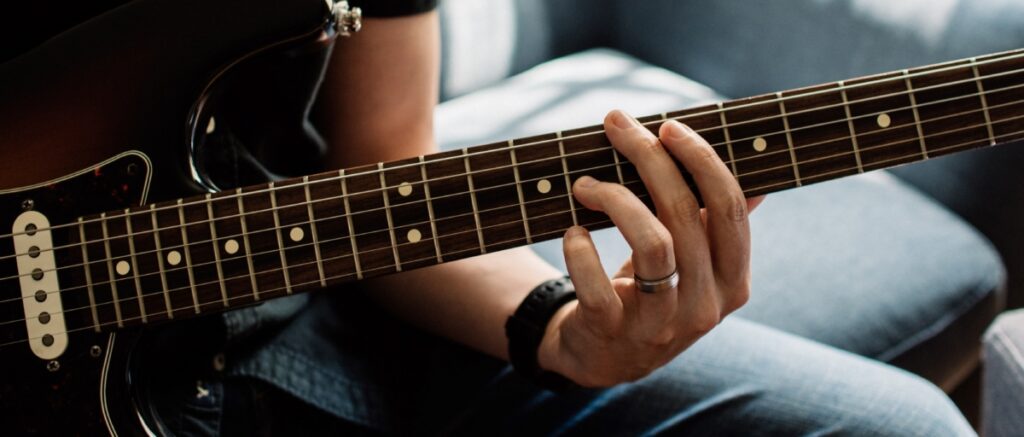
Body and Neck Finishes
There are three types of finishes used on electric guitar bodies and necks: nitrocellulose, polyurethane and polyester.
- Squier Stratocasters and Mexican Fender Stratocasters have a polyester finish
- Fender MIJ, American Performer, American Professional II, American Ultra, American Ultra Luxe and American Vintage II 1973 Stratocasters have a polyurethane finish
- Fender American Vintage II 1957 and 1961 Stratocasters have a nitrocellulose finish
Nitrocellulose finishes are the most time consuming and expensive to apply, and therefore are only really used on high-end guitars. Nitro finishes are slightly porous compared to poly finishes, which means they are softer. This makes the finish more prone to damage but also easier to repair. Some players are a big fan of the relic finishes which have an aged look due to the yellowing and cracks that appear over time in the nitrocellulose lacquer.
Poly finishes have better durability and are less prone to fading and chips. They don’t feel as soft and look slightly glossier than nitro finishes, which some people prefer. Polyester finishes are generally used on cheaper models and are sometimes criticised for having a “plastic-y” feel.
Check out this article comparing nitro and poly finishes to learn more.
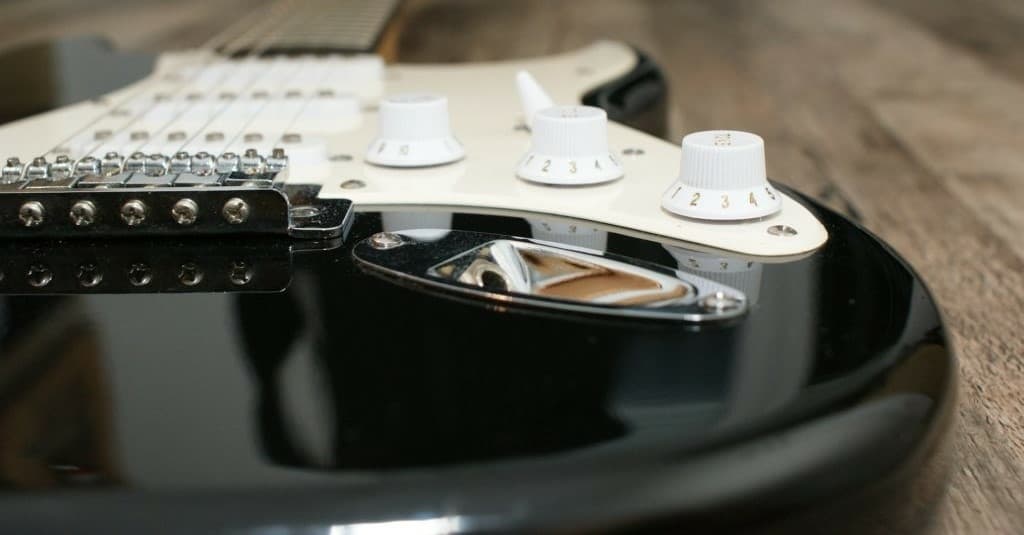
Hardware
If you look at the cheapest Squier Stratocasters (e.g. Bullet, Sonic and Affinity), then you’ll notice that the hardware is not the best. The tuners don’t offer the best stability and the bridges are also lacking in quality as well, and the cheapest models don’t even have a tremolo bridge.
However, if you step up to the Squier Classic Vibe Stratocaster, you’ll notice a significant improvement in hardware quality and in my opinion it is very similar to the Fender Player, Vintera and American Performer models. The only notable upgrade really is the tremolo block on the Fender Player compared to the Squier CV.
However, the Squier CV actually has a bone nut, whereas the Fender Player, Vintera and American Performer Stratocasters have “synthetic bone” aka plastic nuts which most players consider inferior.
It’s only when you step up to the American Professional II models (and above) where you’ll notice a real improvement, and even then you’ll only find locking tuners on the most expensive Fender American Ultra/ Ultra Luxe Stratocasters.
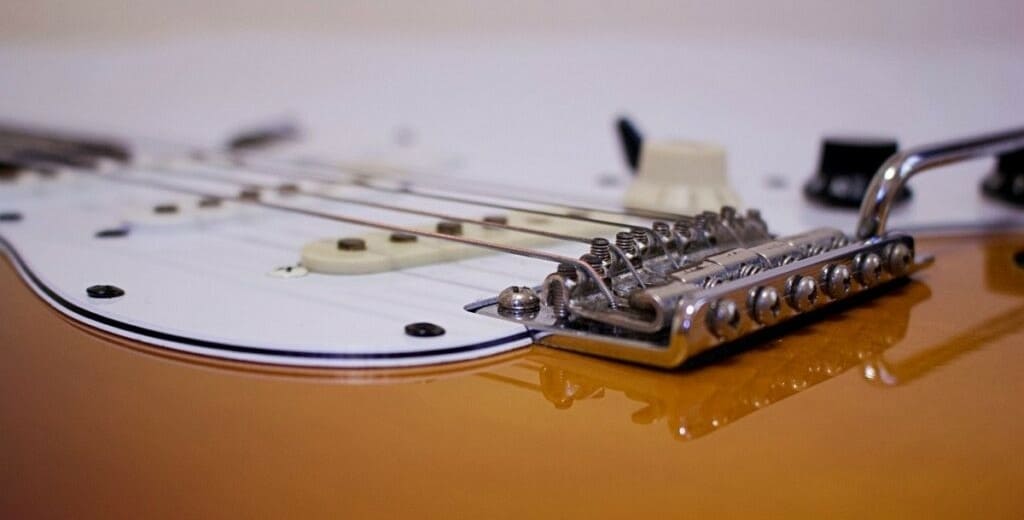
Feel and Playability
Squier Stratocasters all have C-shape necks which feel comfortable for most players. Fender Stratocasters are available with a range of different neck profiles to suit different more particular preferences.
Here is a list of the different neck profile, nut width and fingerboard specification options available.
| Neck Profile | Fingerboard Radius | Nut Width | Stratocaster Models |
| C-Shape | 7.25” | 1.65” | Fender Vintera ‘60s/ American Vintage II 1961/ American Vintage II 1973 |
| C-Shape | 9.5” | 1.65” | – Squier Mini/ Bullet/ Affinity/ Classic Vibe – Fender Player/ Vintera Modified/ MIJ |
| C-Shape | 12” | 1.65” | Squier Contemporary |
| C-Shape | 12” | 1.685” | Fender Player Plus/ American Performer |
| Deep C-Shape | 9.5” | 1.685” | Fender American Professional II |
| Soft V-Shape | 7.25” | 1.65” | Fender Vintera ‘50s/ American Vintage II 1957 |
| D-Shape | 10”-14” | 1.685” | Fender American Ultra |
Check out my guide to Fender and Squier neck profiles to learn more.
The fret sizes also varies between all the different models. Here’s a table showing the different options available.
| Fret Size | Stratocaster Models |
| Vintage Tall | Fender American Vintage II |
| Narrow Tall | – Squier Mini/ Bullet/ Sonic/ Classic Vibe – Fender Vintera/ MIJ/ American Pro II |
| Medium Jumbo | – Squier Affinity – Fender Player/ Player Plus/ Vintera Modified/ American Ultra/ American Ultra Luxe |
| Jumbo | – Squier Contemporary – Fender American Performer |
Here are links to some articles if you want to learn more about the different fret sizes:
You can also get some notable playability upgrades on some Fender Stratocasters such as a sculpted neck heel (on Fender American Ultra, American Professional II and Player Plus versions) to aid upper fret access. The American Fender Stratocaster models also usually have better fretwork and more rolled fingerboard edges to improve comfort.

Additional Controls/ Switching
On Squier Stratocasters, you’ll find the classic controls and pickup selection options which are:
- Master volume control
- Tone control for the neck/ middle pickup
- Tone control for the bridge pickup
- 5-way pickup selector
You’ll also find this control layout on most Fender Stratocasters, namely the Player, Vintera, American Original, and American Vintage II.
However, some Fender Stratocasters you will get some more advanced switching options which could be of interest to many players as it adds a few more options.
Here is a quick guide to the different models with additional controls.
Fender American Performer/ Player Plus Stratocaster
These models have a push/ pull tone control which activates the neck pickup regardless of which pickup selector position you’re using. For example, you can use position 1 (bridge pickup only) and engage the push/ pull tone control so that both the bridge and neck pickups are active. On the HSS versions, the push/ pull tone control coil splits the humbucker pickup.
Fender American Ultra/ Ultra Luxe/ Vintera Modified Stratocaster
This has a push/ pull volume control (S-1 switch) which allows you to activate the neck pickup. This is the same as the Fender American Performer/ Player Plus models but instead of the push/ pull being located on the tone control, it’s located on the volume control. On the HSS versions, the push/ pull volume control coil splits the humbucker pickup.
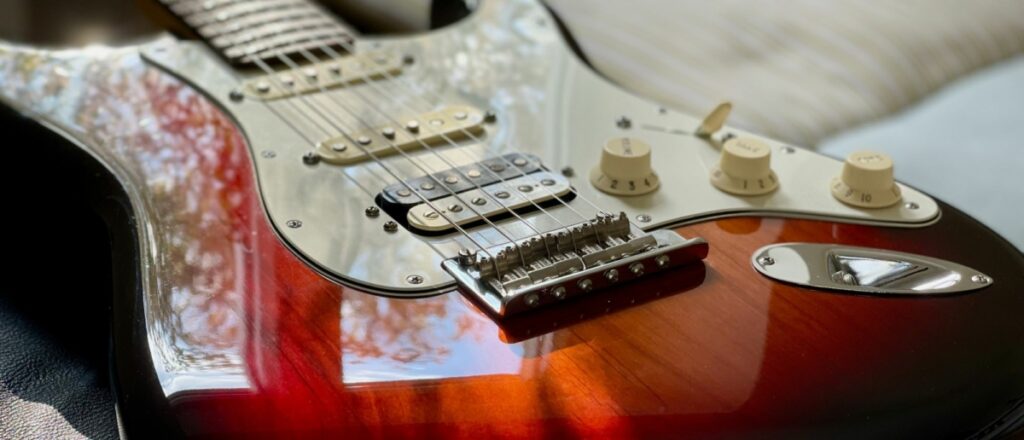
Gig Bags/ Cases
This might not be a huge deal for most buyers, but I think it’s definitely worth mentioning what comes included with each Stratocaster model.
- All Squier models: no gig bag or case
- Fender Player: no gig bag or case
- Fender Player Plus: soft gig bag
- Fender Vintera: soft gig bag
- Fender American Performer: soft gig bag
- Fender American Professional II: hard shell case
- Fender American Original: hard shell case
- Fender American Vintage II: hard shell case
- Fender American Ultra/ Ultra Luxe: hard shell case
As you can see from the list, cheapest Fender Strat does not come with any gig bag or case. It’s only when you step up to the Player Plus model that you get a soft gig bag included, and if you want a hard-shell case to come included then you’ll have to go for at least the American Pro II model.
Prices and Models Available
Fender Stratocasters cost between $800 and $2600 brand-new, whereas Squier Stratocasters cost between $200 and $430.
When it comes to the resale value, Fender Stratocasters hold more of their value as a percentage, however since they are more expensive to begin with, more money is lost when selling a Fender Strat compared to a Squier Strat in relation to the original price.
I’ve done some research and compared the cost of new and second-hand Squier and Fender Stratocasters and complied the table below. Each second-hand price is based on guitars in “excellent condition” and is averaged from at least 5 individual guitars.
| Stratocaster | Brand New Price | Used-Hand Price | $ Difference | % Difference |
| Fender American Ultra Luxe | $2600 | $2100 | $500 | 19% |
| Fender American Vintage II | $2100 | $1700 | $400 | 19% |
| Fender American Ultra | $2100 | $1600 | $500 | 24% |
| Fender American Original | $2100 | $1550 | $550 | 26% |
| Fender American Pro II | $1700 | $1350 | $350 | 21% |
| Fender American Performer | $1450 | $1050 | $400 | 28% |
| Fender Vintera | $1100 | $800 | $300 | 27% |
| Fender Player Plus | $1100 | $875 | $225 | 20% |
| Fender Player | $800 | $650 | $150 | 19% |
| Squier Classic Vibe | $430 | $320 | $110 | 26% |
| Squier Affinity | $250 | $170 | $80 | 32% |
| Squier Bullet | $200 | $125 | $75 | 38% |
If you’re looking for a specific comparison of the most expensive Squier and cheapest Fender Stratocaster check out my comparison between the Squier Classic Vibe and Player Series
